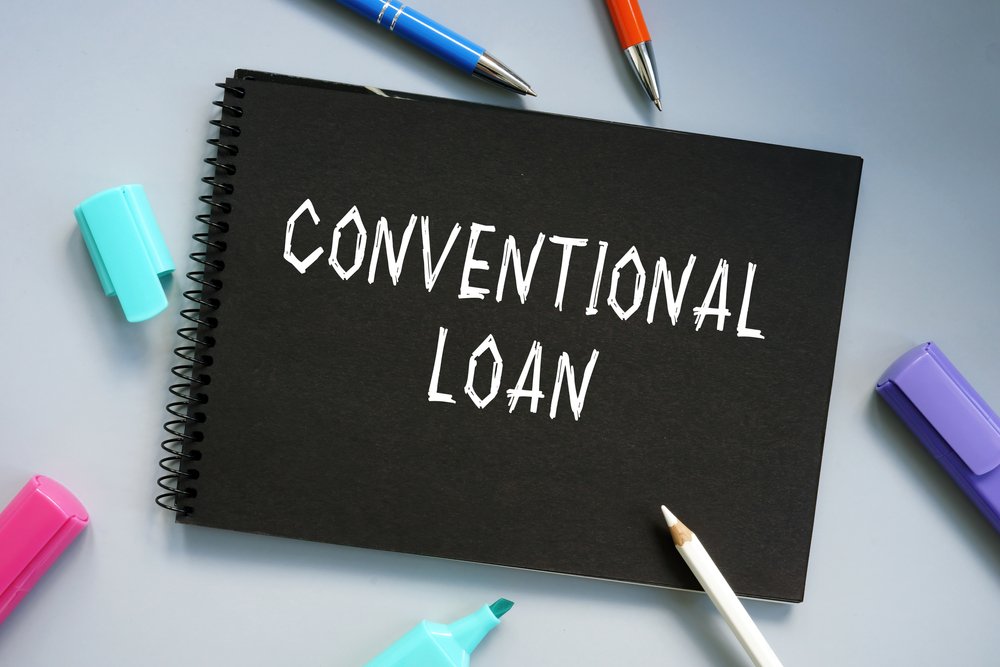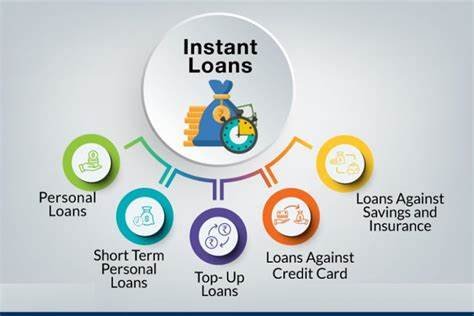Introduction to Conventional Loans
Conventional loans are a type of mortgage that is not backed by any government agency, distinguishing them from alternatives such as FHA (Federal Housing Administration) and VA (Veterans Affairs) loans. Typically, conventional loans adhere to the guidelines set by Fannie Mae and Freddie Mac, two government-sponsored entities that purchase and guarantee loans for lenders. These loans are generally offered by banks, credit unions, and mortgage companies, making them widely available to consumers.
A key characteristic of conventional loans is that they often require a higher credit score compared to government-backed loans, with most lenders looking for a minimum score of around 620. In addition to a commendable credit score, borrowers must demonstrate their ability to repay the loan through income verification and debt-to-income ratios. This can represent a challenge for some applicants, yet those who meet these criteria can enjoy significant benefits, including lower interest rates and the absence of upfront mortgage insurance premiums.
One notable difference between conventional loans and FHA or VA loans is the requirement for private mortgage insurance (PMI). Under conventional financing, if the down payment is less than 20%, borrowers are typically required to purchase PMI, which adds to monthly payments. However, once the equity in the home surpasses 20%, PMI can usually be canceled, thus reducing the cost of the mortgage over time.
Another advantage of conventional loans is their flexibility in terms of loan amounts and repayment schedules. Borrowers can choose between fixed-rate and adjustable-rate mortgage options, allowing them to select a loan type that best fits their financial situation. This versatility proves appealing to a wide range of borrowers, making conventional loans an attractive option for many striving to meet their financial needs.
The Advantages of Conventional Loans
Conventional loans present a range of advantages that make them an attractive choice for many borrowers. One of the primary benefits is the lower borrowing costs associated with these loans. Borrowers can often secure better interest rates compared to other loan types, like FHA or VA loans, which can save significant amounts over the duration of the loan. These reduced costs arise from the fact that conventional loans are not insured or guaranteed by the government, which allows lenders to offer more competitive rates.
Another significant advantage of conventional loans is the flexibility in terms of loan amounts. Borrowers have access to various loan sizes, accommodating different financial needs and home price ranges. This flexibility makes conventional loans suitable for first-time homebuyers looking for smaller, more affordable homes, as well as for seasoned investors wishing to purchase larger properties. Consequently, this versatility enhances the appeal of conventional loans across a diverse range of buyers.
Furthermore, conventional loans do not necessarily require private mortgage insurance (PMI) for borrowers who can afford a substantial down payment, typically 20% or more. This absence of PMI can translate into lower monthly payments, thereby improving the overall financial situation of the borrower. This factor is particularly important for those with the financial capability to make a larger initial investment, as it ultimately diminishes their overall borrowing costs.
In summary, conventional loans stand out for their lower borrowing costs, flexible loan amounts, and the potential elimination of PMI, making them an optimal choice for a variety of consumers considering their financial needs. Each of these advantages contributes to the overall appeal of conventional loans in the competitive lending landscape.
Comparison with FHA and VA Loans
When evaluating financing options for home purchases, it is essential to understand the distinctions between conventional loans and government-backed loans, such as FHA and VA loans. Conventional loans are not insured or guaranteed by the government, which leads to different qualification criteria, down payment requirements, and interest rates compared to their government-backed counterparts.
One of the primary differences between conventional loans and FHA loans lies in the qualification criteria. FHA loans are designed to assist individuals with lower credit scores and limited financial histories, allowing for more flexible approval standards. This can be beneficial for first-time homebuyers, but it may come with certain restrictions. Conventional loans, on the other hand, typically require higher credit scores and a more stable income history. This may limit accessibility for some borrowers, but it often results in more favorable terms and rates for those who qualify.
Down payment requirements further differentiate these loan types. FHA loans permit down payments as low as 3.5%, making them accessible for many borrowers. However, this low down payment often comes with mortgage insurance premiums that can increase overall costs. Conversely, conventional loans may require a down payment of 5% to 20%, but private mortgage insurance (PMI) can be avoided if the borrower puts down 20% or more. This can lead to long-term savings for those who can afford a larger upfront investment.
Lastly, interest rates can vary significantly between these options. Generally, conventional loans offer competitive interest rates for borrowers with strong credit profiles, whereas FHA loans may carry slightly higher rates due to the insurance premiums and risk factors involved. The potential for lower rates with conventional loans can make them an attractive option for many, particularly for buyers who meet the necessary credit standards and can make a larger down payment.
In conclusion, while FHA and VA loans serve specific borrower needs, conventional loans often provide advantages in terms of qualification, down payment flexibility, and interest rates, making them a preferred choice for many individuals seeking financial solutions in the housing market.
Eligibility Requirements for Conventional Loans
Understanding the eligibility requirements for conventional loans is essential for prospective borrowers seeking financing for home purchases or refinances. These loans are typically not backed by government agencies, which means lenders set specific criteria for approval. Among these criteria, credit score thresholds play a significant role. Most lenders require a minimum credit score of 620, but higher scores may lead to better loan terms and lower interest rates. A strong credit history reflects responsible borrowing behavior, which is a crucial factor that lenders consider when determining an applicant’s eligibility for conventional loans.
Another important element in the eligibility assessment is income stability. Lenders want to ensure that borrowers have a consistent source of income to meet mortgage payments over the long term. Applicants must provide proof of stable income, which may include pay stubs, tax returns, and bank statements. Generally, lenders prefer borrowers to have at least two years of steady employment in the same field. This demonstrates not only reliability but also financial stability, which is a favorable quality when applying for a conventional loan.
Lastly, debt-to-income (DTI) ratios are critical in evaluating an applicant’s financial health. The DTI ratio compares an individual’s total monthly debt payments to their gross monthly income. Lenders typically prefer a DTI ratio of 43% or lower, although some flexibility may exist depending on other factors, such as credit score and reserves. A lower DTI indicates that a borrower has a manageable debt load and is more likely to make timely mortgage payments. Overall, understanding these eligibility requirements will help prospective borrowers assess their suitability for conventional financing and improve their chances of securing a loan.
Interest Rates and Costs Associated with Conventional Loans
When considering the financial implications of a conventional loan, it is essential to understand how interest rates are determined and the various associated costs involved. Interest rates for conventional loans can significantly fluctuate based on market conditions. Factors such as inflation, economic growth, and the demand for mortgages play a crucial role in shaping these rates. Moreover, individual borrower profiles, including credit scores, income levels, and debt-to-income ratios, can also affect the interest rate assigned to a specific person. A well-qualified borrower can often secure more favorable terms, translating into lower monthly payments over the life of the loan.
In addition to the interest rates, borrowers should be aware of other costs associated with conventional loans. Closing costs, which typically range from 2% to 5% of the loan amount, include a variety of fees such as loan origination fees, appraisal fees, title insurance, and recording fees. These costs can vary depending on the lender and the specific loan product. It is advisable for potential borrowers to request a Loan Estimate from lenders, which provides detailed information regarding these costs, ensuring better transparency and aiding informed decision-making.
Another important consideration is private mortgage insurance (PMI). For borrowers who do not make a down payment of at least 20%, PMI is often mandated to protect the lender against the higher risk associated with lower equity. Thus, while conventional loans offer competitive interest rates, it is crucial to account for all associated costs for a comprehensive understanding of the financial commitment involved. Evaluating interest rates alongside the various expenses will ultimately assist potential borrowers in determining if a conventional loan is the right option for their financial needs.
Why Conventional Loans Offer Greater Flexibility
One of the most significant benefits of conventional loans is the flexibility they provide to borrowers. Unlike other types of loans, conventional loans come with a variety of term lengths, typically ranging from 10 to 30 years. This diversity allows borrowers to choose a timeline that best suits their financial situation, which can lead to more manageable monthly payments and less overall interest paid over time.
In addition to varied term lengths, conventional loans offer options for both fixed and adjustable interest rates. A fixed-rate conventional loan ensures that the interest rate remains constant throughout the life of the loan, providing borrowers with consistent monthly payments that make budgeting simpler. On the other hand, an adjustable-rate conventional loan offers lower initial rates which can be appealing for those who plan to sell or refinance before the interest adjusts. This flexibility allows borrowers to select the option that aligns with their financial strategies and objectives.
Furthermore, conventional loans allow for straightforward refinancing opportunities. Homeowners may refinance their conventional loans to capitalize on lower interest rates or to adjust their loan terms based on their changing financial situations. Importantly, many traditional lenders incentivize refinancing, often allowing borrowers to do so with minimal penalties. This adaptability is essential for individuals who seek to optimize their mortgage conditions as markets fluctuate or their personal finances evolve.
Overall, the flexibility inherent in conventional loans positions them as a favorable option for a wide range of financial circumstances. Whether seeking lower monthly payments, the stability of fixed rates, or favorable refinancing options, conventional loans provide the tools necessary for borrowers to navigate their unique financial journeys effectively.
The Role of Down Payments in Conventional Loans
When considering a conventional loan, one of the most significant factors is the down payment. A down payment is an initial payment made when purchasing a property, and its size can greatly influence the terms of the loan. Typically, conventional loans require a down payment ranging from 3% to 20% of the home’s purchase price. Borrowers who can afford a larger down payment often benefit from lower interest rates, reduced monthly payments, and the possibility of avoiding private mortgage insurance (PMI), which can add to the overall cost of the loan.
A common misconception is that a borrower must put 20% down to secure favorable terms on a conventional loan. While a 20% down payment can offer significant advantages, such as eliminating PMI, many lenders now offer options for those who cannot reach that threshold. For instance, some conventional loans allow for a down payment as low as 3% or 5%, making home ownership more accessible for first-time buyers or those with limited savings.
However, making a smaller down payment can come with its own implications. Borrowers who opt for a lower down payment should be aware that they may face higher interest rates and the requirement to pay PMI until their loan balance reaches 80% of the home’s appraised value. This additional cost can impact overall financial planning and home affordability. Conversely, a larger down payment not only reduces monthly payments but also positions borrowers as less of a risk in the eyes of lenders, potentially leading to even more favorable terms.
Ultimately, it is essential for prospective homebuyers to evaluate their financial situation and understand the implications of their down payment choice when considering a conventional loan. By doing so, they can make informed decisions that align with their long-term financial goals.
Common Myths About Conventional Loans
When it comes to financing a home, many potential borrowers are often misled by common myths surrounding conventional loans. These misconceptions can deter individuals from exploring a loan option that may be well-suited for their financial needs. One prevalent myth is that only high-income earners can qualify for conventional loans. In reality, these loans are accessible to a wide range of borrowers, including those with moderate incomes. Lenders consider various factors, including credit scores, debt-to-income ratios, and employment history, rather than solely focusing on income levels.
Another misconception is that conventional loans require a substantial down payment, typically 20% of the home’s purchase price. While a 20% down payment can help borrowers avoid private mortgage insurance (PMI), it is not a strict requirement. Many lenders offer conventional loan options with down payments as low as 3%, making homeownership more achievable for many individuals and families. Understanding this can open doors for prospective buyers who may feel disqualified by the myth of high down payment requirements.
Furthermore, some potential borrowers assume that conventional loans are always more expensive than FHA or VA loans. Although conventional loans do come with certain requirements such as stricter credit standards, they can also offer competitive interest rates and lower overall costs in the long term. This is especially true for borrowers who have good credit, as they may qualify for better rates on conventional products. It is essential for borrowers to shop around and compare offers from various lenders to get a clear picture of potential costs associated with different loan types.
Ultimately, dismantling these myths can empower borrowers to make informed decisions regarding their financing options, ensuring they consider the full range of potential benefits associated with conventional loans.
Conclusion: Is a Conventional Loan Right for You?
As we have explored throughout this blog post, conventional loans offer a variety of benefits that can make them an appealing option for many borrowers. Their competitive interest rates, flexible terms, and broader availability compared to government-backed loans are key factors that contribute to their popularity. However, it is essential to remember that conventional loans may not be suitable for everyone. The decision to pursue this form of financing should be based on an individual’s unique financial situation and goals.
When considering whether a conventional loan aligns with your financial needs, several factors must be taken into account. Firstly, assess your credit score, as conventional loans typically require a higher credit rating than FHA or VA loans. A strong credit profile can help secure a lower interest rate, making homeownership more affordable in the long run. Additionally, evaluate your debt-to-income (DTI) ratio; lenders typically prefer a DTI ratio of 43% or lower when approving conventional loan applications.
Furthermore, ponder your long-term plans. If you intend to stay in your home for a significant period, a conventional loan may be advantageous due to its more favorable terms. Conversely, if you plan to relocate or sell your home within a few years, you might want to explore other financing options that better suit your situation. Ultimately, it is crucial to gather all pertinent information and weigh the pros and cons of conventional loans against your specific circumstances.
In conclusion, a conventional loan can serve as a beneficial financial tool for many individuals, but it is imperative to assess your financial disposition and seek personalized advice from a financial professional. Their expertise can help you navigate the complexities of the lending landscape and determine whether a conventional loan is indeed the right choice for you.




